
Palit ranks the Geforce GTX 1080 Ti SuperJetstream below the GameRock Premium Edition, but uses the same board, but no Vortex fans. How good is this model compared to its own top model and competitor cards? This is exactly the question we have asked ourselves and we want to answer it with today's test.
The map follows the SuperJetstream line purely visually, even though some minor cosmetic surgeries have been performed. Of course, this does not make the card any quicker, but it is a little more respectable.
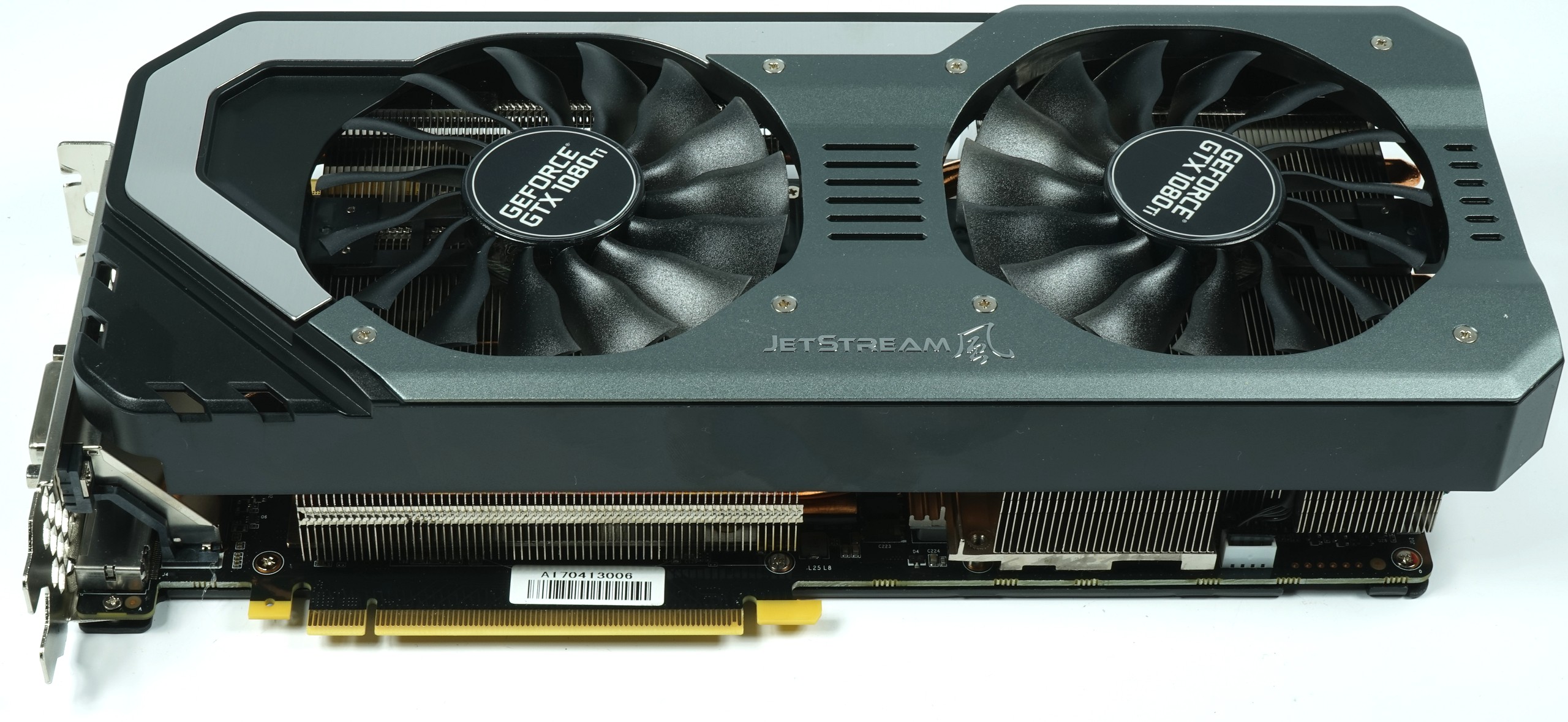
Since the actual performance of all board partner cards depends more on the actual boost clock achieved, and thus causally depends on the cooling, the power target and above all the quality of the respective chip, any test based only on benchmark bars is more of a Random snapshot of a single specimen. This is precisely why we have focused on the actual technical implementation of each model and have been able to document this very well with our equipment.
Unboxing, dimensions and connections
The accessories are limited to the usual three-handers such as DVD, manual and 8-pin adapters. Otherwise, there is only the card. We will discuss their exact board and cooling design separately later. The most important features are first summarized in a table:
| Overview of installation dimensions, features and connections | |
|---|---|
| Installation length: |
28.6 cm (slot aperture to end cover) |
| Installation height: |
12.5 cm (upper edge slot to top card) |
| Depth: |
5.0 cm (2.5 slot) 0.5 cm baking plate |
| Weight: |
1329 grams |
| Backplate: | Yes, with passive cooling function |
| Cooling: | Air Horizontally aligned cooling fins |
| Fan: |
2x 10 cm (9.5 cm rotor diameter) |
| Connections Slot blend: |
3x DisplayPort 1.4 1x HDMI 2.0 1x Dual-Link DVI-I |
| Other shots: |
2x SLI Connector |
| Power supply: |
2x 8-pin PCI-Express |
Exterior views
Now let's look at the map from the outside. Palit, like many others, is back on a matte, graphite-coloured plastic cover that is haptic and visually fine. The days of red or gold-coloured plastic structures seem to be over here as well. The chrome-like application looks nice, but is extremely scratch-sensitive.
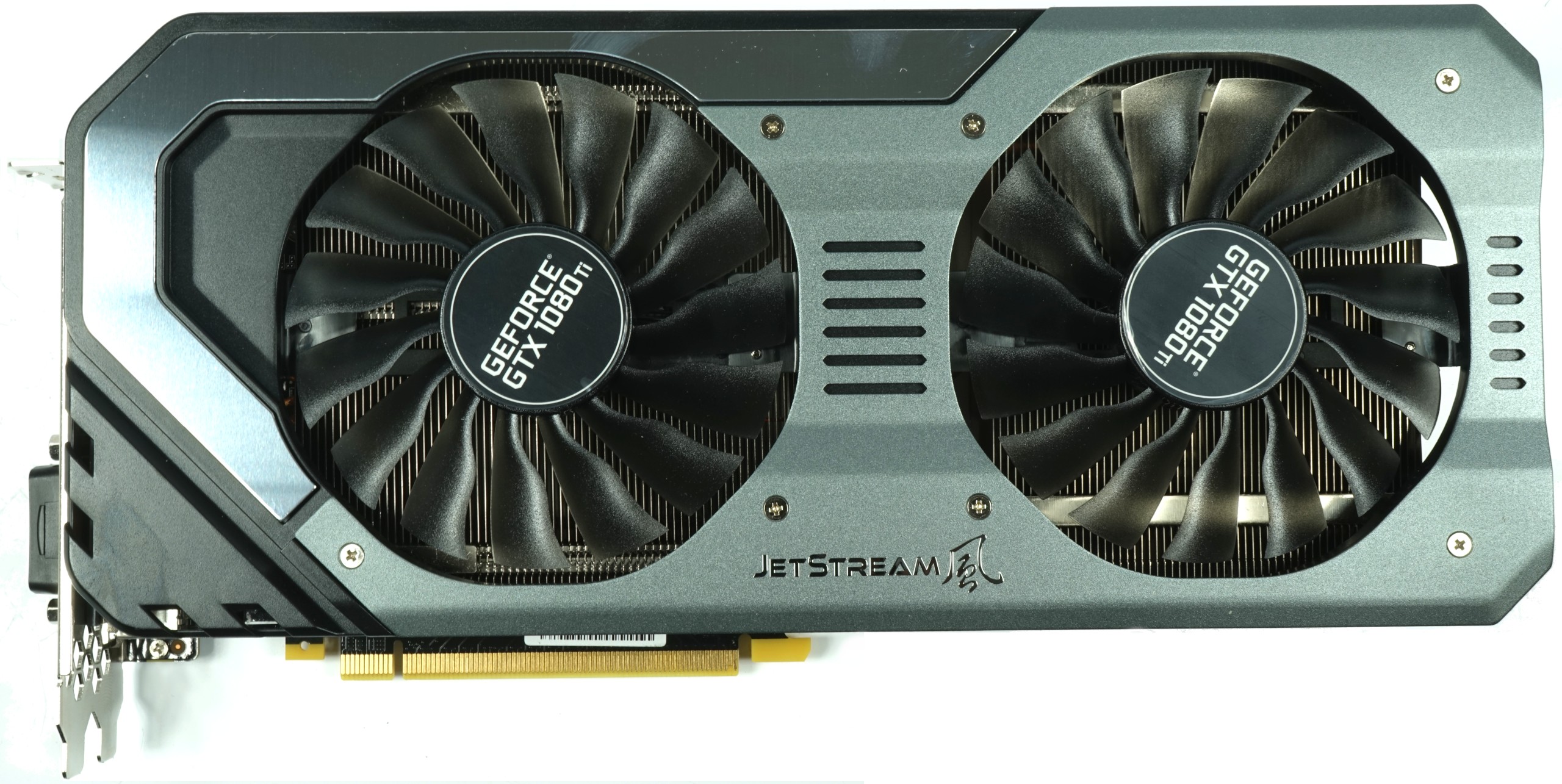 |
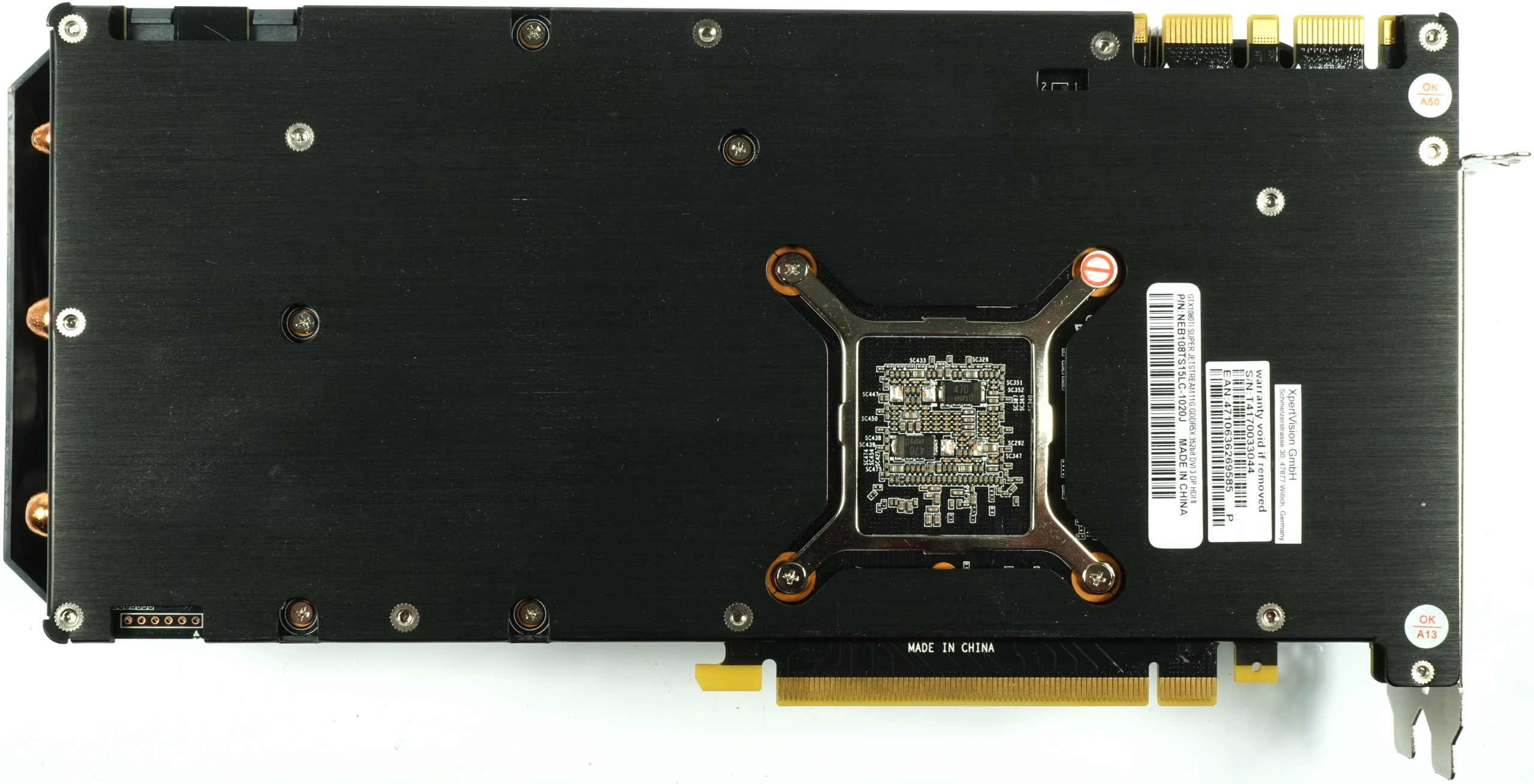 |
The cooling fins are vertically aligned, the two 8-pin sockets of the external power supply are installed rotated by 180°. The logo on the top is equipped with an RGB backlight and can also be customized by means of its own software.


In the case of the connections, only one HDMI output is used, which e.g. VR glasses are not very accommodating.
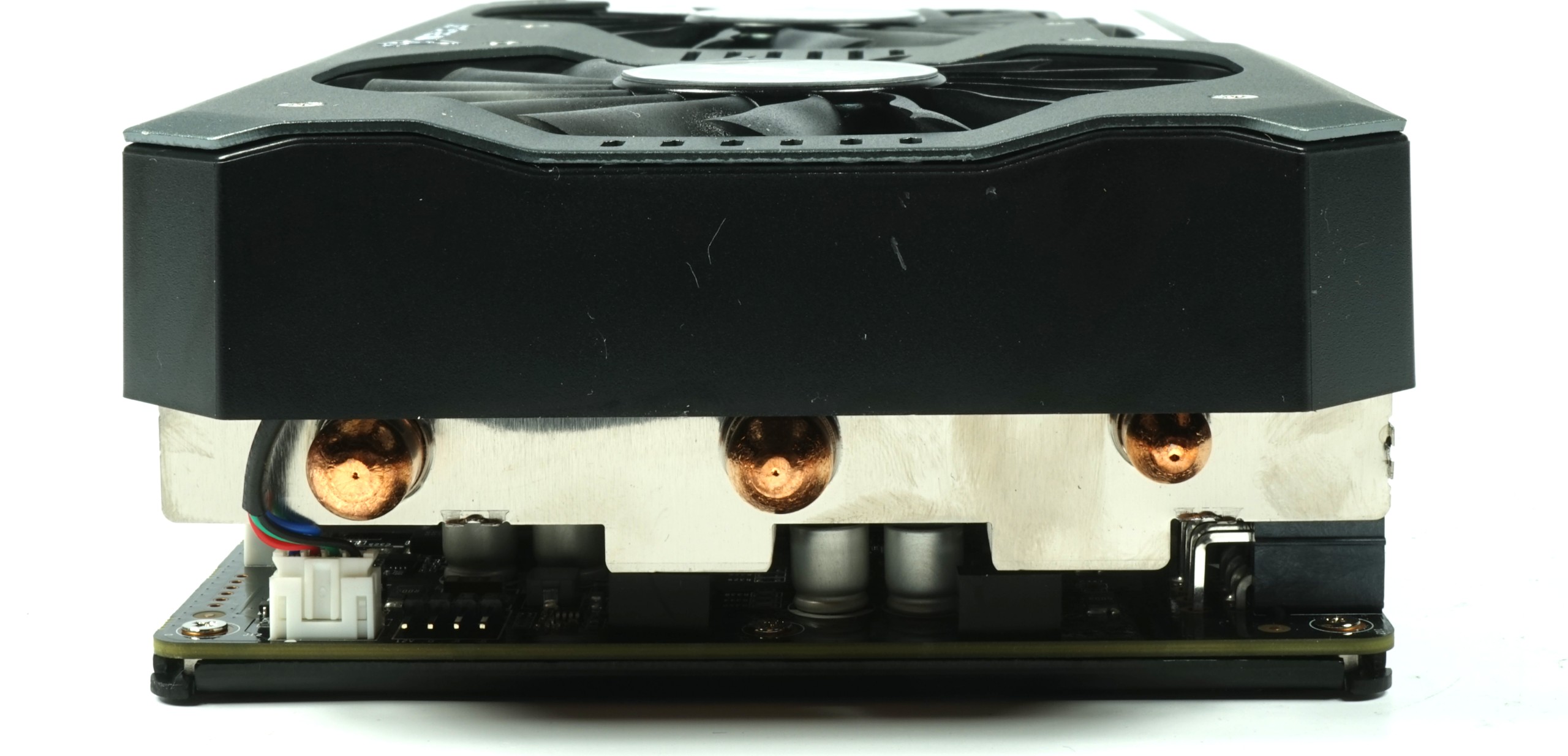 |
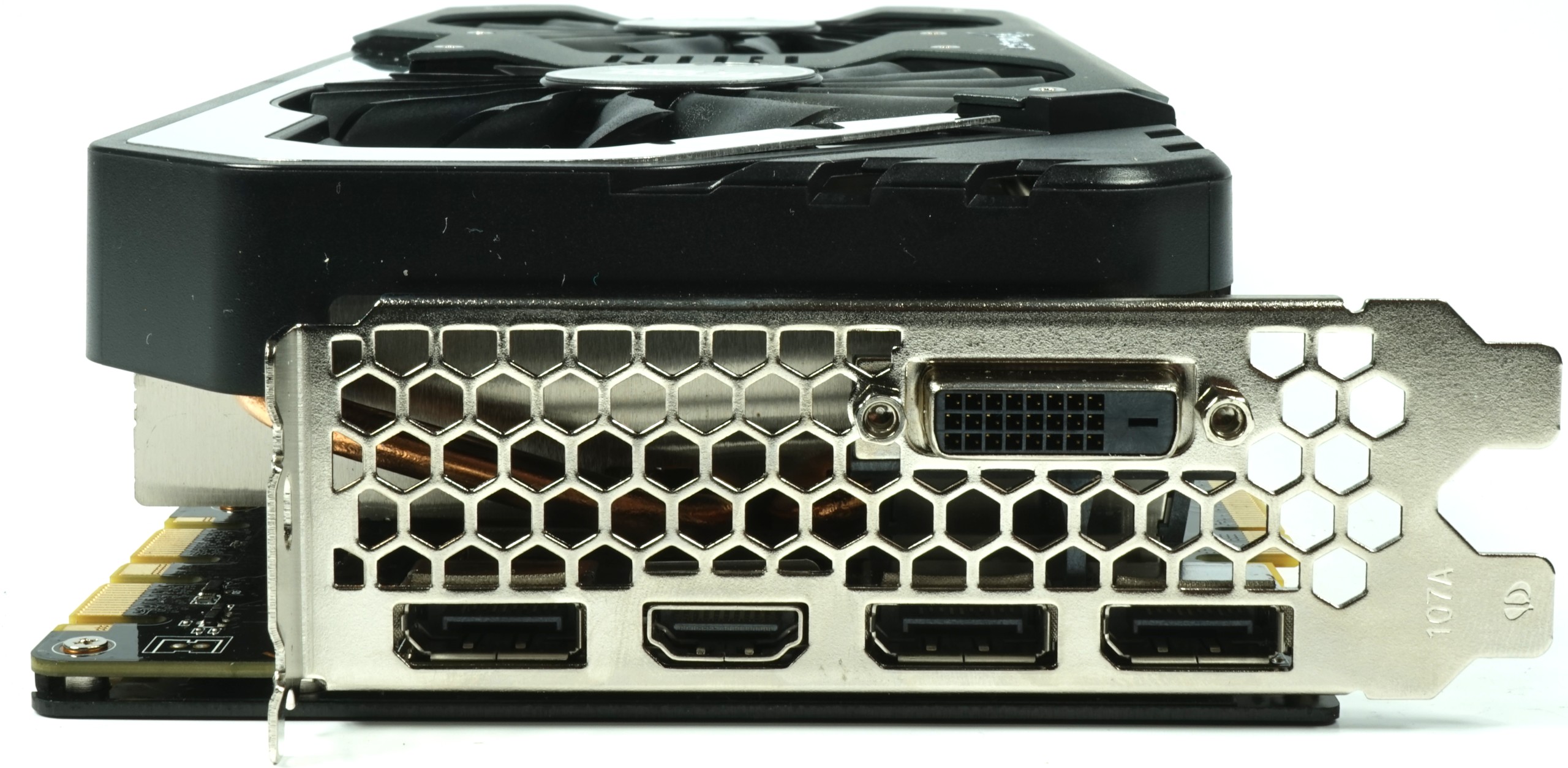 |
Specifications
The GPU-Z screenshot shows us the most important key data in advance, whereby the actual boost achieved was of course higher with our model. This in turn relativizes such theoretical data a little, so that we really want to refer to the following test results later:
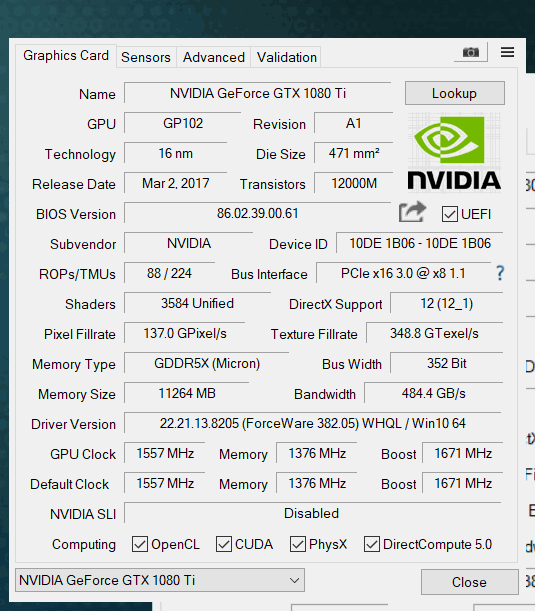
Finally, the whole thing again as a tabular comparison to the other relevant graphics card models:
| Nvidia Titan X – (Pascal) Mr President, I would like to |
Nvidia Geforce GTX 1080 Ti FE |
Palit GTX 1080 Ti SuperJetstream |
Nvidia Geforce GTX 1080 FE |
Nvidia Geforce GTX 980 Ti |
|
|---|---|---|---|---|---|
| Gpu |
GP102 | GP102 | GP102 | GP104 | GM200 |
| CUDA cores |
3584 | 3584 | 3584 | 2560 | 2816 |
| Base clock | 1417 MHz | 1480 MHz | 1557 MHz |
1607 MHz | 1000 MHz |
| Boost clock |
1531 MHz+ | 1582 MHz+ | 1671 MHz |
1733 MHz+ | 1076 MHz+ |
| Memory Size & Type |
12 GByte GDDR5X |
11 GByte GDDR5X |
11 GByte GDDR5X |
8 GByte GDDR5X |
6 GByte GDDR5 |
| The size |
471 mm2 | 471 mm2 | 471 mm2 | 314 mm2 | 601 mm2 |
| Technology |
16 nm | 16 nm | 16 nm | 16 nm | 28 nm |
| Transistors |
12 billion | 12 billion | 12 billion | 7.2 billion | 8 billion |
| Streaming Multiprocessors (SM) |
28 | 28 | 28 |
20 | 22 |
| GFLOPS (basic clock) |
10.157 | 10.609 | 11.161 |
8.228 | 5.632 |
| Texture Units |
224 | 224 | 224 | 160 | 176 |
| Texture fill rate |
317.4 GT/s | 331.5 GT/s | 348.8 GT/s |
257.1 GT/s | 214 GT/s |
| Rops |
96 | 88 | 88 |
64 | 96 |
| Pixel fill rate |
136 GPix/s | 130.24 GPix/s | 137.0 GPix/s |
114.2 GPix/s | 116.7 GPix/s |
| Storage data rate |
10 Gbps | 11 Gbps | 11 Gbps | 10 Gbps | 7 Gbps |
| Storage bus |
384 bits | 352 bits | 352 bits | 256 bits | 384 bits |
| Memory bandwidth |
480 GByte/s | 484.4 GByte/s | 489.3 GByte/s | 320 GByte/s | 336 GByte/s |
| L2 cache |
3 MByte | 2816 KByte | 2816 KByte | 2 MByte | 3 MByte |
| Tdp |
250 watts | 250 watts | 300 Watt (PT) |
180 watts | 250 watts |
Test system and measurement methods
The new test system and the methodology have already been described in great detail in the basic article "How We Test Graphics Cards" (English: "How We Test Graphics Cards") and therefore, for the sake of simplicity, we now only refer to this detailed Description. So if you want to read everything again, you are welcome to do so. However, we have improved CPU and cooling once again in order to largely exclude possible CPU bottle necks for this fast card.
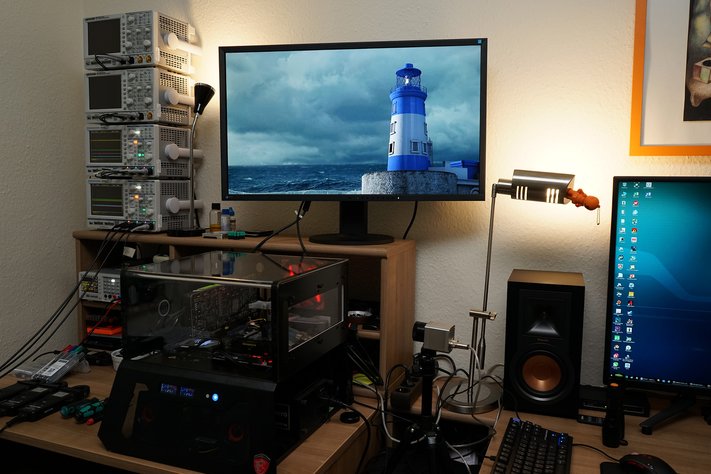
If you are interested, the summary in table form quickly provides a brief overview:
| Test systems and measuring rooms | |
|---|---|
| Hardware: |
Intel Core i7-6900K -4.3GHz MSI X99S XPower Gaming Titanium Corsair Vengeance DDR4-3200 1x 1 TByte Toshiba OCZ RD400 (M.2, System SSD) 2x 960 GByte Toshiba OCZ TR150 (Storage, Images) Be Quiet Dark Power Pro 11, 850-watt power supply Windows 10 Pro (all updates) |
| Cooling: |
Alphacool Ice Block XPX Alphacool Ice Age 2000 Chiller 2x Be Quiet! Silent Wings 3 PWM (Closed Case Simulation) Thermal Grizzly Kryonaut (for cooler change) |
| Housing: |
Lian Li PC-T70 with expansion kit and modifications Modes: Open Benchtable, Closed Case |
| Monitor: | Eizo EV3237-BK |
| Power consumption: |
non-contact DC measurement on the PCIe slot (Riser-Card) non-contact DC measurement on the external PCIe power supply Direct voltage measurement on the respective feeders and on the power supply 2x Rohde & Schwarz HMO 3054, 500 MHz multi-channel oscillograph with memory function 4x Rohde & Schwarz HZO50, current togor adapter (1 mA to 30 A, 100 KHz, DC) 4x Rohde & Schwarz HZ355, touch divider (10:1, 500 MHz) 1x Rohde & Schwarz HMC 8012, digital multimeter with storage function |
| Thermography: |
Optris PI640, infrared camera PI Connect evaluation software with profiles |
| Acoustics: |
NTI Audio M2211 (with calibration file) Steinberg UR12 (with phantom power for the microphones) Creative X7, Smaart v.7 own low-reflection measuring room, 3.5 x 1.8 x 2.2 m (LxTxH) Axial measurements, perpendicular to the center of the sound source(s), measuring distance 50 cm Noise in dBA (Slow) as RTA measurement Frequency spectrum as a graph |

































Kommentieren